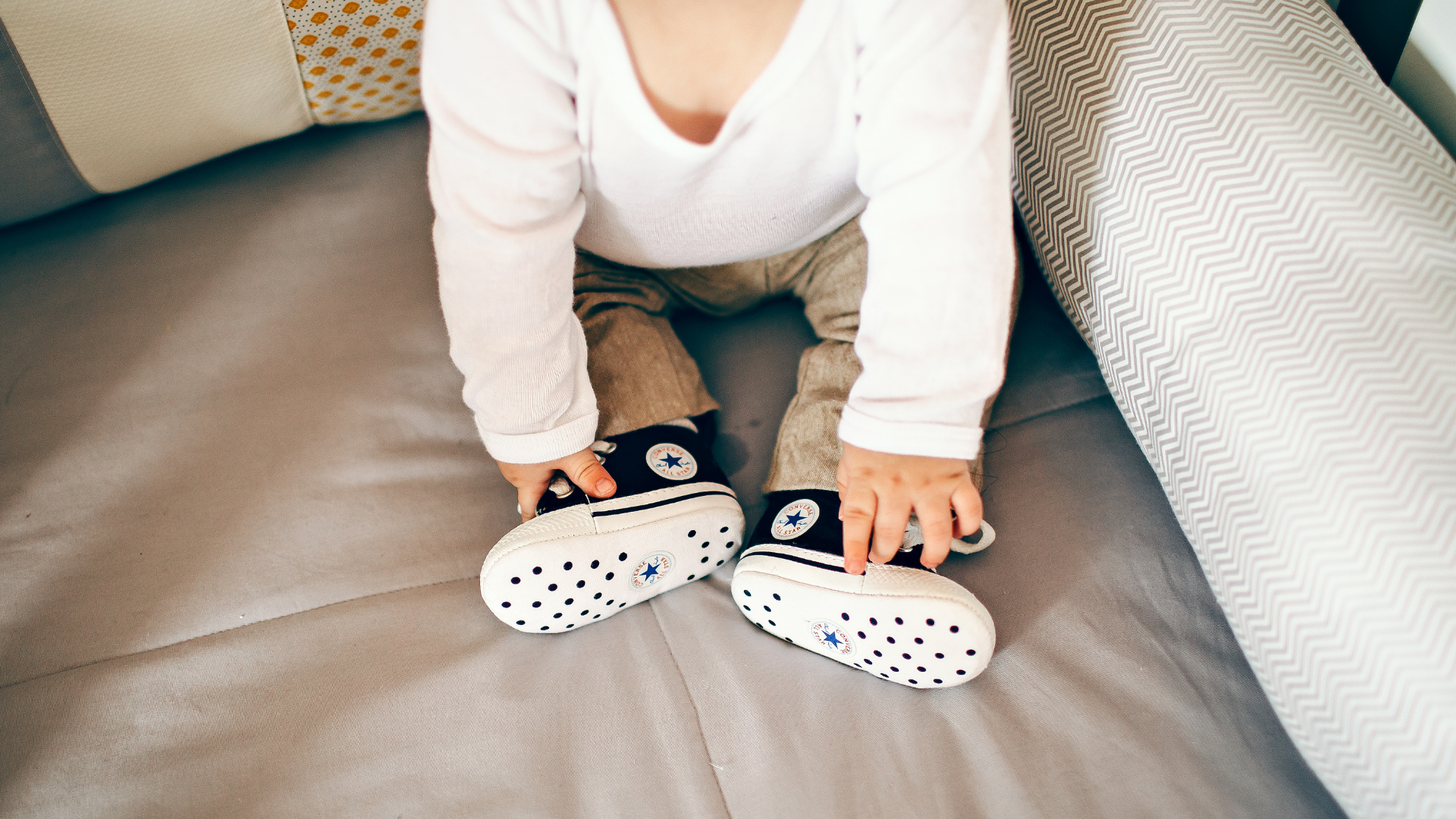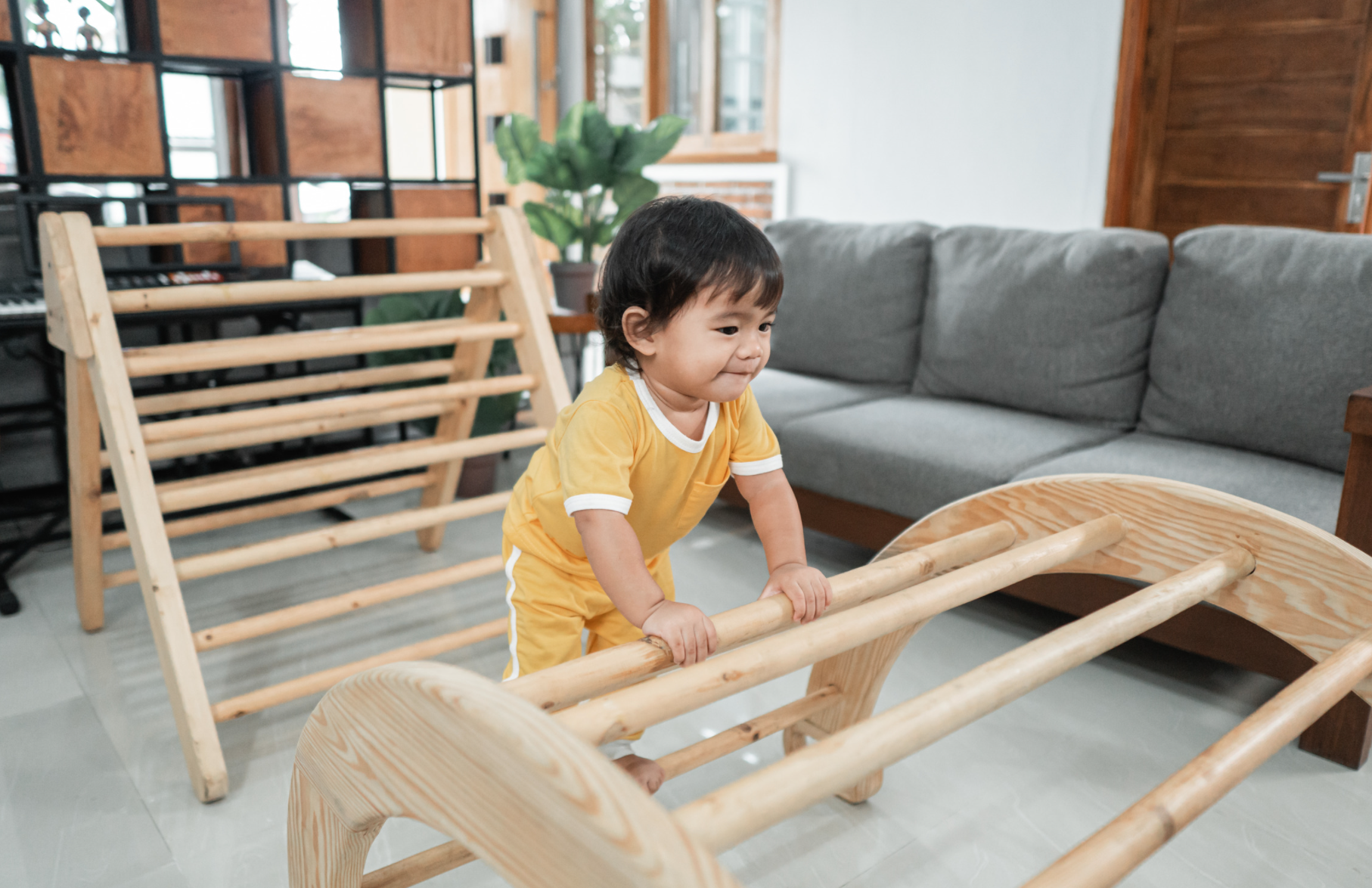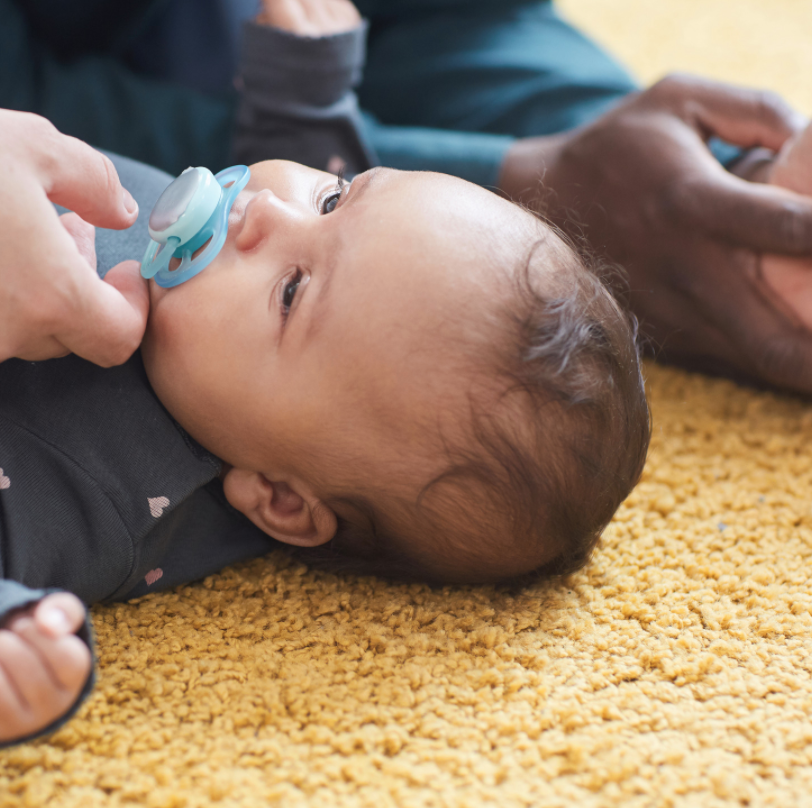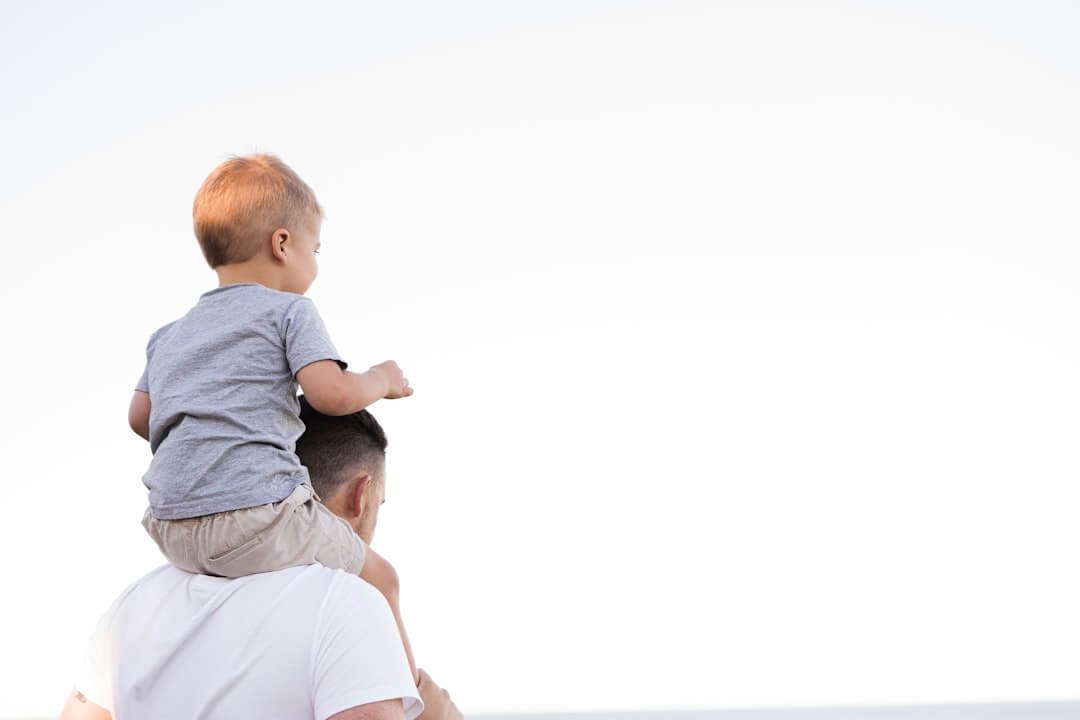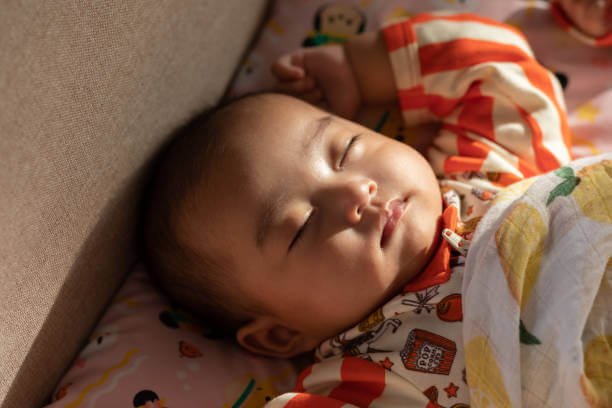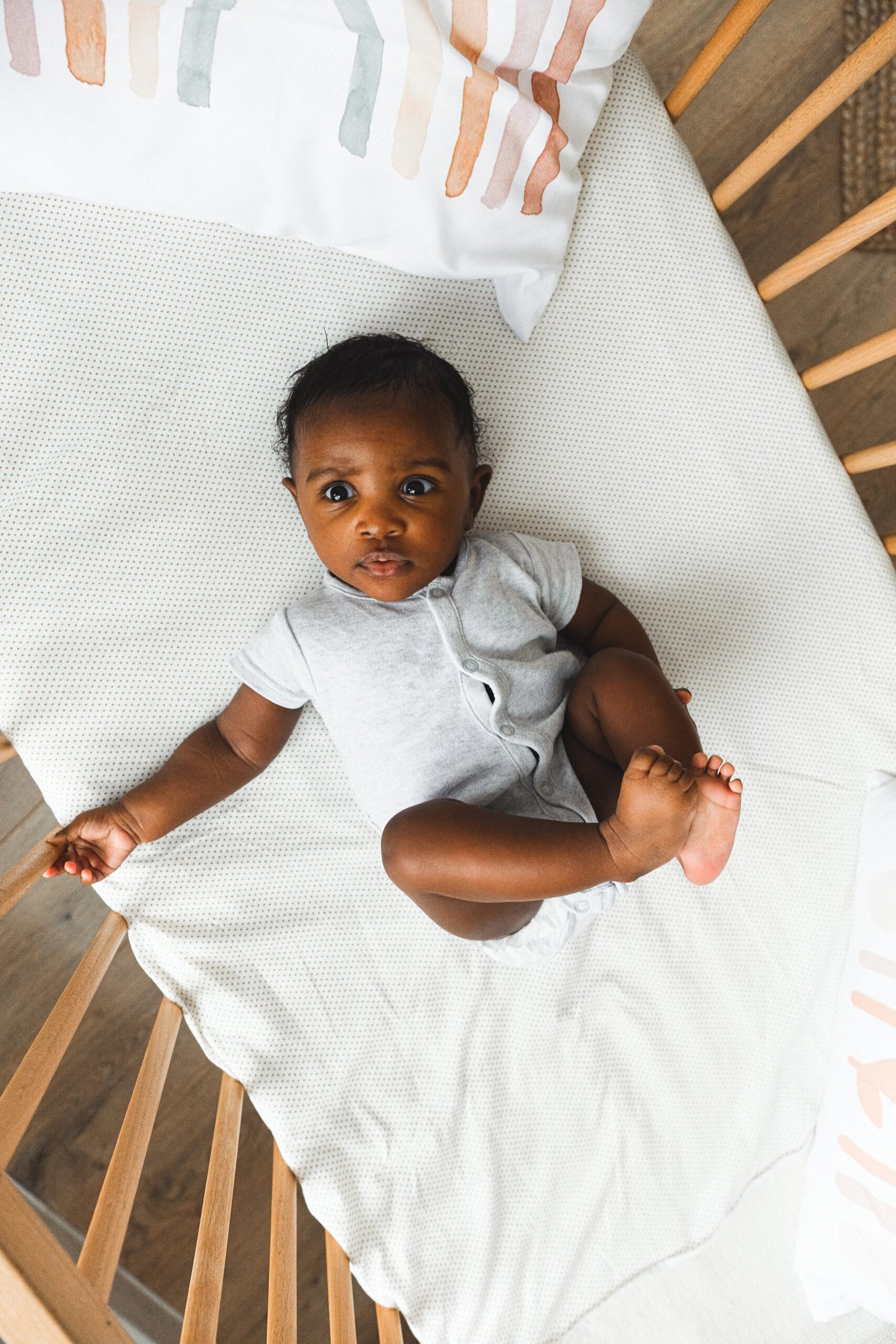I'm Rachael
Mom of 3 & Baby Sleep Expert with Big Sis Energy
& I’VE DONE ALL THE RESEARCH FOR YOU ALREADY.
Better sleep for the entire family
BROWSE COURSES
hey!
Baby Shoes For Walking, In Partnership With Ten Little
in this post:
Ok so your kiddo is starting to stand, or might even be walking and you may find yourself wondering, what kind of shoes do babies need when they start walking? Well, I have thoughts and hopefully some helpful considerations for you when deciding what to put on your child’s feet.
Are Baby Walking Shoes Necessary?
First and foremost, as an Occupational Therapist, I would encourage you to give your baby lots of barefoot time. Having those toesies out in the fresh air is so good for your child. When it comes to sensory input, bare feet get to experience a variety of textures and surfaces. Letting your little one go around in their bare feet also helps with the development of the muscles in their feet and legs. As their feet and legs adjust and adapt to a variety of surfaces, their muscles strengthen and grow. I personally found it easy to have our pandemic-born baby stay barefoot – No need to put on footwear when you stay home all the time! Most babies don’t need shoes for those early days- just a pair of socks or soft shoes that can be used to keep their feet warm depending on the season.
Before I get started talking about specific types of shoes, I would like to clarify that my recommendations are for typically-developing walkers. If you are worried that your child’s walking is off, or that something is not right with their feet, listen to that intuition! Early intervention and treatments for these types of concerns can really help your child, and research consistently shows the earlier you get support, the better. If you do have worries, I encourage you to seek out pediatric specialists like a physician or a physical therapist. They can examine your child and diagnose low tone, flat feet, or other musculoskeletal issues or concerns. One great resource I have found for parents who are looking for shoes that work well with supports like orthotics is Kailee, a Pediatric Physical therapist who goes by the Instagram handle “the movement mama”. I highly recommend her highlight about shoes, which has some good general advice, as well as specific advice for shoes that work well with orthotics.
That being said, If you don’t find yourself having specific concerns about your child’s walking or gross motor development, read on for tips and advice.
Shoes For Babies
When your baby does start to stand, take their first steps or cruise (a term OT/PT’s use to refer to when your baby gets around on their feet while holding onto objects) soft-soled shoes are a great first shoe.
These types of shoes include your moccasins, your soft ballet flats, or any shoe that might have a basic sole with a little bit of traction. While these shoes typically have soles, often the soles have a lot of flexibility. The level of support these shoes provide is a nice in-between type of support. Because they are not super sturdy, soft shoes allow for more input to the feet from the environment. These shoes allow kiddos to feel the surfaces under their feet which helps with the muscle development that is important in those early walking days. While it’s not the same as a normal shoe, the simple sole does give the foot some of that protection more structured shoes have. This kind of protection can be nice for indoor and simple outdoor walking or when at outside-of-the-home spaces like daycare.
Shoes for Toddlers: Rough + Tumble Ready
Keeping this info in mind, the time must come for all parents to purchase what you imagine your standard shoe to look like i.e. something with a little more support. Our little one was an early walker so I had to purchase sturdier shoes earlier than anticipated. In my process, I started researching lots of information about the best shoes for young walkers. I found some good tips from some great pediatric OT’s and PT’s and I have compiled them here to share with you!
So when you are looking at shoes, you really want to look at the structure of the shoe. Is it a soft moccasin style, or does the shoe have more support? As you can probably guess, more structured shoes do give kiddos more stability. However, you want to look for a sweet spot- not too much support, but also not just a glorified sock.
Try This!
A good tip I learned from Rachel Coley, the OT behind Can Do Kiddo, is to test the stability of your child’s shoe by bending it. If you are able to bend the shoe from toe to heel and there is some give and flexibility that is a good sign that it has some structure, but not too much. Now do the opposite and bend the toe up to the heel, looking again to see how it bends and gives. Another good test is to twist the shoe like you would wring out a rag. If you do all of these things and find that your shoe has some give and flexibility, you are on your way to finding a good pair.
Ten Littles
I have had my eye on Ten Little shoes for a while now, after hearing great things about them from other parents, so I was excited to look into some of their features as part of their partnership with Hey Sleepy Baby. Their shoes are so cute, and they look really functional. Also, all the styles are adorable! They recently started making the cutest Mary Jane shoes, which as a girl mom, I am forever searching for a functional, but cute shoe to go with dresses. So while they look good on the outside, I wanted to know if they would pass the test of being toddler-proof? Looking into their shoe-types, I found there was a lot to love.
Something that caught my eye right away when looking at Ten Little shoes is that they have a higher heel cup. This keeps the shoes from slipping off which can definitely be an issue with other styles of shoes, such as those soft shoes that I mentioned above:
It’s always nice when shoes come with a little loop on the back of each pair to help the shoe slide off or to pull them on, especially when you are helping your kiddos who are working on getting independent in dressing, but aren’t quite there.
Another great feature I noticed was the shoes’ wide toe box. This is really awesome for growing feet because it allows for a natural toe position. That means your kiddo’s toes can all rest flat next to each other instead of being scrunched up or on top of each other.
Do they pass the bend test? When you hold these shoes in your hand and bend the soles like I mentioned above, they do have some bend and give. I also like that the soles are flat, this is important for foot development in the early days of walking. It provides some support, but not too much, striking that balance you want to look for in walking shoes for babies.
While these shoes are not waterproof, they are made of vegan leather which is easy to wipe down for cleaning. Another thing I found so helpful when looking into these shoes was their support with sizing. As a first-time parent, I was very unsure about what size my daughter would wear, and I wanted to find the right fit if I was going to invest in new shoes. They made it really easy for me to find her size by sending me a pdf that I could print and place her foot on to find her size. After your first purchase, you will find that their boxes include a sizing guide that can guide you when your child sizes up. What a clever idea!
Not only do they have shoes for when your toddler is out and about walking in the community, they also have some soft bootie-type shoes that I mentioned above. The soft sole is perfect for babies when they just start walking, giving some protection to the foot while still remaining very sensory-friendly which, as you now know, is very important in those early pairs of baby shoes! We had a pair of sherpa-booties that my daughter had before she was walking. They were so ideal for keeping her toes warm, and were very cute – that design went with any outfit!
So does Ten Little receive my OT stamp of approval for footwear? Definitely! They have great options of pairs for beginners and I really appreciate the design of their shoes for toddlers. Outside of the good design elements, I value that the company was founded by moms seeking a solution. I loved reading that at Ten Little they work to sustainably source the materials for their products. You should definitely check them out!
I hope this article can support you in your journey in finding shoes for your child. Shoes are a great way to support your baby to help them as they grow more mobile and able to access the world around them – a very fun, and busy, time of your child’s development. Cheers!
Featured
If you follow the world of crunchy moms and Montessori babies on social media it’s hard to have not stumbled across the Pikler Triangle. It’s neutral colors fit stylishly into many a playroom- but are these climbing frames really worth the hype and the price tag?
There’s nothing wrong with a pacifier in my opinion. It provides one of the best forms of sensory input and soothing mechanisms for a baby: sucking! Many lactation experts will say that it’s best to wait until breastfeeding has been well established until introducing a pacifier, which can be up to 3-6 weeks, so always follow the advice of the Lactation Consultant you’re working with.
It’s not necessarily the screen time that’s terrible, but the fact that it takes the place of the real work of childhood, which is play and exploration.
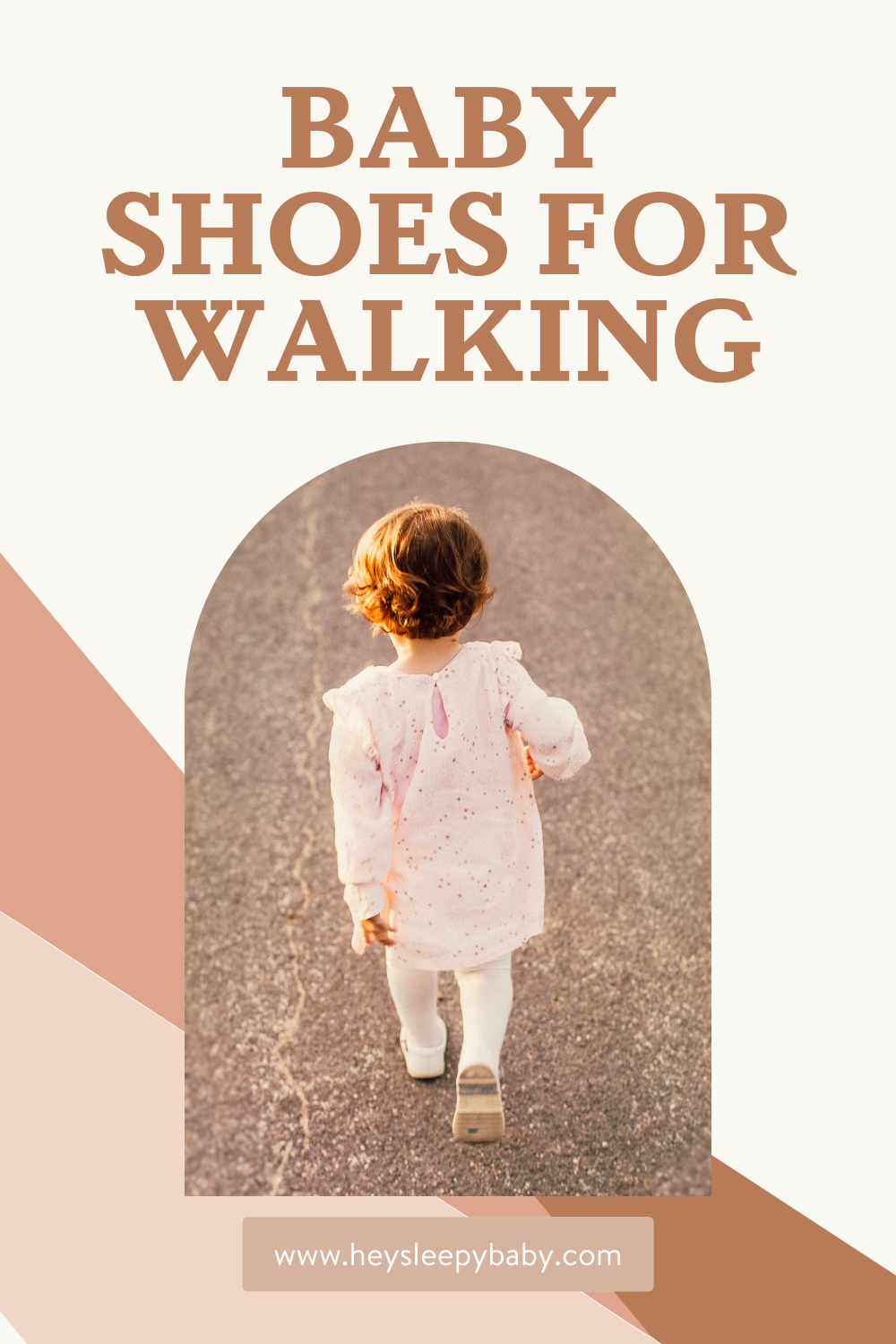
binge reads
We think you'll love these
You deserve to the
baby stage, not just "survive it."
And you DON'T have to sacrifice your values, ignore your instincts, or force yourself to follow a method you don't align with just to get your baby back to sleep.
I’m here to help you create a restful, sustainable sleep environment that honors both your baby’s needs AND your own (without the stress OR the guilt!) because, no, you don’t have to choose between the two.
enjoy!
BABY SLEEP COURSES →
BABY SLEEP CONSULTS →
Wish you could help your baby sleep better without resorting to sleep training? Download my FREE guide to a good night’s sleep and learn 8 simple, science-backed tips for supporting your child’s needs.
Traditional sleep training methods don’t have to be your solution to better sleep.
SLEEP TRAINING ISN’T THE ONLY WAY TO GET GOOD SLEEP
Hey, I'm Rachael and Hey, Sleepy Baby is for parents who want to get their nights back, without sleep training their babies.
NO ONE TOLD US POD
explorING the untold truths of parenting
